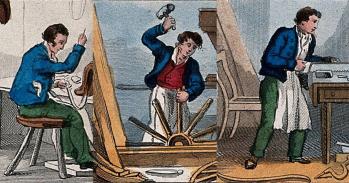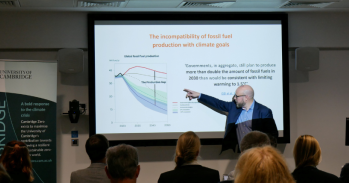
Patterns in the financing activities of firms could be used as a litmus-test to determine company value, according to a new report.
Patterns in the financing activities of firms could be used as a litmus-test to determine company value, according to a new report.
Most financial managers pick investments and look at how they can generate value; we look at how the manager can generate value themselves by making the right financial choices
Eva Steiner
An analysis which shows how the financing activities, or “capital structure”, of real estate firms can be used as a barometer of their overall value has been published online.
The research provides the first evidence-based assessment of which capital structure characteristics are common to successful firms in the US and several European countries. It promises to provide financial decision-makers with a model for enhancing company value, while also offering potential investors a litmus-test from which they can make sounder judgements about a firm’s overall strength.
The work represents a break from traditional approaches to gauging company value, which often deliberately presume that a firm’s financing activity is irrelevant to the value of the firm itself. By making this presumption, economists can account for real-world stresses that might affect the financial decision-making that goes on inside a company, such as taxation, or fluctuations in capital markets.
By contrast, the new research argues that stronger firms nevertheless display consistent characteristics in how they finance their activities and manage debt, and that these can be used as a basis of gauging their value overall.
In particular, it suggests that low leverage – a low ratio of debt to the overall value of shares and assets – is a particularly strong and dependable indicator of the value of a firm.
The study was commissioned by the European Public Real Estate Association (EPRA), and carried out by Dr Eva Steiner, a member of the Department of Land Economy and Fellow of St John’s College, University of Cambridge, and Dr Timothy Riddiough, from the Wisconsin School of Business in the US.
“Most financial managers pick investments and look at how they can generate value; we look at how the manager can generate value themselves by making the right financial choices,” Dr Steiner said.
“Optimal capital structure is a multi-dimensional problem, and this is the first research to look at what combination of characteristics give, on the strength of the available evidence, the best firm value.”
The study assessed all real estate firms covered by the SNL financial database, which collects and disseminates corporate, financial, market, and mergers and acquisitions data. Real estate companies are a good subject for a study of capital structure management because they own and operate large, long-term assets with changeable value, and need to be set up to handle a large amount of debt.
For US firms, the data covered the period from 1993 to 2012, while information was also collected about companies in Germany, France, the UK and the Netherlands between 2001 and 2012. The strength of these firms was measured using a standard rating called “Tobin’s Q”. Having organised the list of companies according to their annual Q ratios, the researchers then compared the capital structure characteristics of firms with the highest Q ratios with those of the lowest.
The process revealed several features of financial strategy that were common to the highest-value firms. In particular, the strongest companies in the sample group maintained low levels of leverage, at a ratio of approximately 35%, whereas weaker firms had on average a higher leverage ratio of approximately 59%.
This inverse relationship between leverage and firm value was the strongest finding of the whole survey. “The general robustness of this finding raises the question why firms deviate from what appears to be a clear, characteristic-informed optimal leverage ratio that is associated with significantly stronger firm value,” the authors note.
The study also found several other strong indicators of company value. Stronger firms have longer debt maturity, matching the typically longer-term maturity of their assets, and a higher proportion of fixed-rate, rather than variable-rate debt.
Higher-value companies also tend to have lower levels of secured debt, whereas weaker firms typically pledge collateral when borrowing capital. “We found that stronger firms tend to be able to borrow on grounds of their overall creditworthiness,” Steiner said. “They can access capital markets trading on the quality of the firm, without having to rely on collateral to mitigate lender concerns.”
While all of these factors were indicative of value among companies in the US, in Europe the relationship between leverage and firm value was far more significant than the others. The authors suggest that this indicates that capital structure has a more consistent and decisive impact on company value in the US.
The study is ongoing, with Steiner and Riddiough due to publish further analysis from their research in 2015. “Overall our findings suggest that a defensive, prudent capital structure with low leverage, aimed at matching debt and asset maturity and managing interest rate risk through utilising fixed-rate instruments, is able to make a significant contribution to firm value,” Steiner added.
The full report can be found on the EPRA website.
The text in this work is licensed under a Creative Commons Licence. If you use this content on your site please link back to this page. For image rights, please see the credits associated with each individual image.





